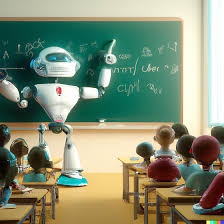The rapid advancement of artificial intelligence (AI) tools like ChatGPT has sparked an intense debate about their role in education. While some educators and experts see ChatGPT as a revolutionary tool that can enhance learning, others worry it could pose challenges and risks for students and teachers alike. So, is ChatGPT the future of classrooms or a potential threat to traditional education? Let’s explore both sides.
The Future: How ChatGPT Can Transform Classrooms
- Personalized Learning Assistant:
ChatGPT can act as a 24/7 tutor, helping students with homework, explaining complex concepts in simple terms, and providing instant answers tailored to individual learning styles. - Boosting Creativity and Critical Thinking:
By generating ideas, brainstorming topics, or even helping draft essays, ChatGPT can inspire students to think more creatively and critically, encouraging deeper engagement with subjects. - Support for Teachers:
Teachers can use ChatGPT to design lesson plans, create quizzes, and generate supplementary educational materials quickly, allowing them to focus more on interactive teaching. - Accessibility:
For students with disabilities or language barriers, AI-powered tools can offer personalized support that traditional classrooms might struggle to provide.
The Threat: Concerns and Challenges
- Academic Integrity Risks:
One of the biggest worries is that students might misuse ChatGPT to complete assignments or exams, leading to plagiarism and undermining genuine learning. - Overreliance on AI:
If students become too dependent on ChatGPT for answers, they might miss out on developing problem-solving skills and independent thinking. - Bias and Misinformation:
AI models can sometimes produce incorrect or biased information, which could mislead students if not carefully monitored. - Teacher-Student Relationship:
The personal interaction between teachers and students is crucial. Excessive reliance on AI might weaken these bonds and affect classroom dynamics.
Striking the Balance: The Way Forward
Instead of viewing ChatGPT as purely a threat or a future solution, it’s important to find a balanced approach:
- Guided Use: Teachers can integrate ChatGPT as a supplementary tool while emphasizing critical evaluation and original work.
- Updated Policies: Schools should update academic integrity policies to address AI use explicitly.
- Digital Literacy: Teaching students how to use AI responsibly and critically is key.
- Continuous Monitoring: Educators must stay involved and monitor AI’s impact on learning outcomes.
Conclusion
ChatGPT and similar AI tools hold enormous potential to enhance education by making learning more accessible, personalized, and engaging. However, their integration into classrooms requires thoughtful implementation, clear guidelines, and ongoing dialogue among educators, students, and policymakers. With responsible use, ChatGPT can be a powerful ally in shaping the future of education rather than a threat to its integrity.































































